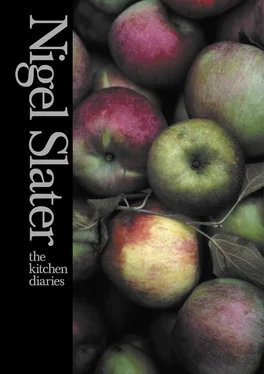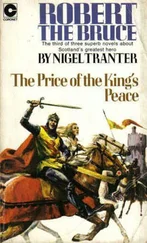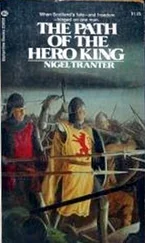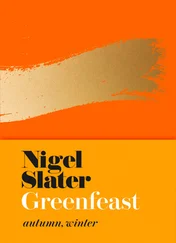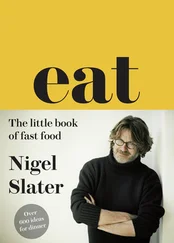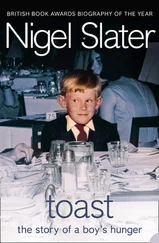Lamb shanks with mustard and mash Lamb shanks with mustard and mash olive oil lamb shanks – 2 small onions – 4 small to medium bay leaves – 3 sprigs of rosemary – 2 or 3 vegetable or meat stock – 250ml red wine – 250ml garlic – 3 cloves grain mustard – 1 heaped tablespoon To serve: mashed potato and a bit more mustard Set the oven at 160°C/Gas 3. Warm a couple of tablespoons of olive oil in a roasting tin large enough to take the meat snugly, then seal the lamb on all sides in the hot oil. The fat and the cut end of the meat should take on a little colour. Peel the onions, slice them in half from root to tip, then each half into quarters. Add them to the lamb with the bay leaves and the leaves from the rosemary sprigs. Pour in the stock and red wine. Peel the garlic cloves and squash them flat with the blade of a heavy knife. Drop them into the roasting tin with a grinding of salt and some coarse black pepper. Cover the dish with foil, place in the oven and bake for an hour and a half. Half way through cooking, uncover the dish and stir in the mustard, turning the lamb as you do so. Cover once more and return to the oven. Serve with mashed potato and a bit more mustard. Enough for 2
Smoked haddock with flageolet beans and mustard Smoked haddock with flageolet beans and mustard The parsley is important here and should be vivid emerald green and full of life. I see no reason why you can’t use equally mealy cannellini beans if that is what you have, though I have used butter beans before now and they were good, too. This is a mild, gently flavoured dish, consoling even, for a cold night. smoked haddock – 400g butter milk – 250ml, plus a little more for later bay leaves flageolet beans – two 400g tins double cream – 300ml parsley leaves – a good fistful grain mustard – 1 heaped tablespoon steamed spinach, to serve Remove the skin from the smoked haddock and place the fish in a lightly buttered baking dish. Pour over the milk, then add enough water almost to cover the fish. Tuck in a couple of bay leaves and grind over some black pepper. Bake at 200°C/Gas 6 for about fifteen to twenty minutes or until you can pull one of the large, fat flakes of flesh out with ease. Drain and discard the milk. Rinse and re-butter the baking dish – you don’t want any bits of skin from the milk left behind. Rinse the beans in a sieve under running water, then empty them into a mixing bowl. Pour in the cream and a couple of tablespoons of milk, then chop the parsley and add it together with the mustard, a grinding of black pepper and a little salt. Go easy on the salt; smoked fish is saltier than fresh. Spoon the beans into the dish and lay the fish on top, spooning some of the creamy beans over the top to keep it moist. Turn the oven down to 180°C/Gas 4 and bake for about forty minutes, until the cream is bubbling and the sauce has thickened around the beans. Serve with spinach. Enough for 2
Roast pumpkin, spicy tomato sauce Roast pumpkin, spicy tomato sauce Deep red and gold, a cheering supper if ever there was one. This simple dish of roast vegetables stands or falls by the timing. I like to roast the pumpkin till it is soft but not quite collapsing, deep golden in colour, the edges slightly caramelised and sticky. Undercook it at your peril. The sauce is chunky and has a certain bitter-sweetness from the lightly blackened tomato skins. You may want to cook some brown rice to go with this, especially if you are having nothing to follow. tomatoes – 950g garlic – 2 cloves chillies – 2 small hot ones olive oil pumpkin or squash – 1kg Set the oven at 200°C/Gas 6. Cut the tomatoes in half and place them cut-side up on a baking sheet or in a roasting tin. Peel and finely slice the garlic, finely chop the chillies. Drizzle the tomatoes with oil, then season with salt and pepper and the garlic and chillies. Roast for forty-five to fifty minutes, till the tomatoes are soft and flecked with black. Meanwhile, halve and peel the pumpkin. Cut into thick, melon-like slices and scoop out the seeds with a spoon. Place on a baking sheet, toss in a little olive oil and season with salt and black pepper. Roast for forty minutes, turning it over after twenty minutes or so. It is done when it is fully tender to the point of a knife and nice and sticky on the cut edges. Roughly chop the tomatoes to give a coarse ‘sauce’. Serve alongside the roasted pumpkin, with brown rice if you wish. Enough for 2 as a main dish
Kipper patties, dill mayonnaise Kipper patties, dill mayonnaise I make these little golden fishcakes as a change from the more traditional haddock version, usually in the winter when smoky flavours seem particularly appropriate. Parsley sauce isn’t right with the kippers, so I make a dill-flavoured mayonnaise instead, or sometimes have them with nothing more than a big squeeze of lemon and a generous helping of greens. floury potatoes – 500g butter – a thick slice kipper fillets – 440g dill – a small handful, chopped flour for dusting shallow groundnut oil for frying For the sauce: chopped dill – 2 heaped tablespoons a crushed clove of garlic mayonnaise – 6 heaped tablespoons Peel the potatoes, cut them into quarters, then boil them in salted water till tender. Drain the potatoes, tip them into a food mixer and beat with the butter to make a smooth but firm consistency. Put the kipper fillets in a jug or heatproof bowl and pour a kettle of boiling water over them. Leave them for ten minutes, till they have softened, then drain and flake the flesh. I tend to leave it in short pieces the size of a postage stamp rather than finely mashed. Fold the fish into the warm potato, together with the chopped dill and a generous seasoning of salt and black pepper. Leave the mixture to cool a little, then shape it into rough patties. I make twelve of them the size of large golf balls, then flatten them slightly. Leave them to cool and firm up. Dust the patties lightly with flour, then fry in shallow hot oil for five minutes or so. To make the sauce, simply mix the chopped dill with the crushed garlic and mayo. Enough for 4
Pork chops, mustard sauce Pork chops, mustard sauce pork spare rib or chump chops – 2 large, about 1cm thick butter – 25g olive oil – 1 tablespoon garlic – 2 large unpeeled cloves, squashed flat a glass of white wine double or whipping cream – 150ml grain mustard – 1½ tablespoons smooth Dijon mustard – 1½ tablespoons cornichons – 8, or half as many larger gherkins Rub the chops all over with salt and pepper. Put the butter and oil in a shallow pan set over a moderate to high heat and, when they start to froth a little, add the flattened garlic and the seasoned chops. Leave to brown, then turn and brown the other side. Lower the heat and continue cooking, turning once, until the chops are no longer pink when cut into. Lift out the chops, transfer to a warm serving dish and keep warm. Pour off most of the oil from the pan, leaving the sediment behind, then turn up the heat and pour in the wine. Let it boil for a minute or so, scraping at the sticky sediment in the pan and letting it dissolve. Pour in the cream, swirl the pan about a bit, then leave it to bubble up a little before adding the mustards and the chopped cornichons. Taste for seasoning; you may need a little salt and possibly black pepper. The sauce should be piquant and creamy. If you want, you can finish the sauce with a few drops of liquor from the cornichon jar to sharpen it up. Pour the sauce over the chops and serve. Enough for 2 with mashed or unbuttered new potatoes
Linguine alla vongole Linguine alla vongole small clams in their shells – 500g a glass of white wine or vermouth linguine or spaghettini – 300g garlic – 2 cloves olive oil – 3 tablespoons crushed dried chilli – a good pinch flat-leaf parsley – a small bunch Scrub the clams, throwing away any that are chipped or wide open. Leave them to soak in cold water for half an hour or so. This will clear some of their inherent grit. Put a large pan of water on to boil. Drain the clams and tip them into a medium-sized pan set over a moderate heat. Pour in the white wine or vermouth and cover them tightly with a lid. After two minutes, no longer, lift the lid and check their progress. If most of the shells are open, turn off the heat. If not, give them a minute or so longer. Generously salt the boiling water and lower in the pasta. Lift the clams from their liquor and pick out each morsel of clam flesh. Discard the shells, but not the cooking liquor. Peel the garlic and slice it thinly, then let it soften in a tablespoon or so of the olive oil over a low heat. It must not colour. Stir in the dried chilli, then roughly chop the parsley leaves and add them. Let them cook briefly, then strain in the cooking liquor from the clams and let it bubble down for a minute. Test the pasta for doneness; you want it to be tender but on the tacky side. About nine minutes should do it. Drain the pasta, tip it in with the clam liquor, then stir in the shelled clam meat. Grind over a little black pepper and pour in the remaining olive oil, then toss gently and serve in warm, shallow bowls. Enough for 2, with seconds
Читать дальше
